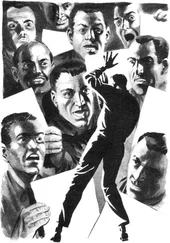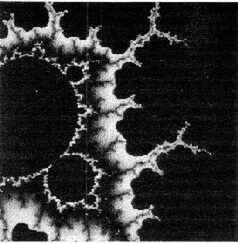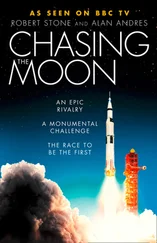She would turn toward the screen on the wall of the room, snapping her fingers to set it alight. It would display the vast, if almost impalpable, semi-cylindrical span of the sail, then zoom down to the passenger capsule—not much bigger than a motel shower stall—that would be Natasha’s home for the weeks in transit.
She would then go on. “After a minute, though, the motion is quite detectable. By then we’ve covered twenty meters, and our velocity has become nearly one kilometer per hour…with only a few hundred thousand more kilometers to go to reach the orbit of the moon.”
Then there would often be a faint titter from the audience. Natasha would smile back good-naturedly until it had died away, before going on. “That’s not bad, you know. After the first hour we’ll be sixty kilometers from our starting point, and by then we’ll be moving at a hundred kilometers an hour. And please remember where we are! All of this will be taking place in space, where there is no friction. Once you start something to move, it will move forever, with nothing slowing it down but the gravity of distant objects. You’ll be surprised when I tell you what kind of velocity our thousandth-of-a-G sailboat will be giving us by the end of its first day’s run. Almost three thousand kilometers an hour, all from the thrust of a sunlight pressure that you can’t even feel!”
Well, she’d convinced them. In the end the whole world had been convinced, or at least the people in high places, the decision makers, had been. Foundations, individuals, the treasuries of three great nations (and smaller amounts from dozens of smaller treasuries) had come together to meet the staggering bills for this event. It was paying off, though. The free-flying race in that old lunar lava tube had successfully sparked a trickle of actual lunar tourism. Now this new event already owned the biggest audience in history. And the big boys were already commissioning their prospector vessels, many of them solar-sail-driven themselves, to begin to investigate the raw material wealth of the solar system.
And here was young Natasha de Soyza Subramanian, right in the middle of it all!
Diana had made a good start. Now Natasha had time to take a look at the opposition. For starters she shrugged out of most of her clothing, since there was no one else around to see. Then, moving very cautiously—there were shock absorbers between her control capsule and the delicate rigging of the sail, but Natasha was determined to take no risks at all—she stationed herself at the periscope.
There the other spacecraft were, looking like strange silvery flowers planted in the dark fields of space. There was South America’s Santa Maria, Ron Olsos at the helm, only eighty kilometers away. Santa Maria bore a close resemblance to a boy’s kite, though a kite that measured more than a kilometer on a side. Beyond Santa Maria was the Russian Cosmo-dyne Corporation’s Lebedev, looking like a Maltese cross; the theory, Natasha knew, was that the sails that formed its four fat arms could be used for steering purposes. In contrast, the Australian Woomera was a simple old-fashioned round parachute, though one that was five kilometers in circumference. General Spacecraft’s Arachne, as its name suggested, looked like a spider’s web—and had been built on the same principles, by robot shuttles spiraling out from a central point. Eurospace’s Gossamer was an identical design, though slightly smaller. And the People’s Republic of China’s Sunbeam was a flat ring, with a kilometer-wide hole in the center, spinning slowly so that it was stiffened by centrifugal force. That was an old idea, Natasha knew, but no one had ever made it work well. She was fairly sure the Asian vessel would have trouble when Sunbeam started to turn.
That, of course, would not be for another six hours, after all seven of the solar yachts had moved through the first quarter of their twenty-four-hour geosynchronous orbit. Here, at the beginning of the race, they were all headed directly away from the sun—running, as it were, before the solar wind. Each of them had to make the most of that first lap, before the laws of orbital motion swung them around Earth. When that point was reached, they would suddenly be heading directly back toward the sun. That was when expert pilotage would really count.
Not now, though. Now Natasha had no navigational worries. With the periscope she made a careful examination of her sail, checking each attachment point for the rigging. The shroud lines, narrow bands of unsilvered plastic film, would have been quite invisible had they not been coated with fluorescent dye. Now, in Natasha’s periscope, they were taut lines of colored light, dwindling away for hundreds of meters toward the gigantic span of the sail. Each line had its own little electric windlass, not much bigger than the reel on a fly fisherman’s rod. The windlasses, computer-controlled, were constantly turning, playing lines in or out as the autopilot kept the sail trimmed to the correct angle to the sun.
To Natasha, the play of sunlight on her great mirrored sail was beautiful to watch. The sail undulated in stately oscillations, sending multiple images of the sun marching across it until they faded at the edges. Those oscillations, of course, were not a problem. Such leisurely vibrations were inevitable in so vast and flimsy a structure, and usually quite harmless. Nevertheless, Natasha watched them carefully, alert for signs that they might ultimately build up to the catastrophic waves that were known as “wriggles.” Those could tear a sail to pieces, but her computer reassured her that the present pattern posed no danger.
When she was satisfied that everything was shipshape—and not before!—she allowed herself to access her personal screen. Since everything passed through the command craft before it got to her, and they were careful to pass on only messages from an approved list, she was spared the endless flood of good luck wishes and begging pleas for some favor or other. There was one message from her family, one from Gamini, and one from Joris Vorhulst. No more. She was glad to get them. None required any answer.
Natasha thought for a moment of going to sleep. Of course, the race had just started, but sleeping was something she needed to ration adequately to herself. All the other yachts had two-person crews. They could take turns asleep, but Natasha Subramanian had no one to relieve her.
That had been her own decision, of course—remembering that other solitary sailer, Joshua Slocum, who long ago had single-handedly taken his tiny sailboat, Spray, around the world. If Slocum could do it, she maintained, she could. There was a good reason to try it, too. The performance of a sun yacht depended inversely on the mass it had to move. A second person, with all her supplies, would have meant adding another three hundred kilos, and that could easily have been the difference between winning and losing.
So Natasha snapped the elastic bands of the cabin seat around her waist and legs. She hesitated for a moment. It might be interesting, she thought, to look in on some of the news broadcasts, particularly to see if any astronomer had yet made any sense of that peculiar not-a-supernova that had blossomed astonishingly bright in the southern sky and then simply disappeared….
Discipline won out over curiosity. She placed the electrodes of the sleep-inducer onto her forehead, set the time for three hours, and relaxed. Very gently, the hypnotic pulses throbbed in the frontal lobes of her brain. Colored spirals of light expanded beneath her closed eyelids, widening outward to infinity.
Then nothing.
What dragged Natasha back from her dreamless sleep was the brazen clamor of the alarm. Instantly she was awake, her eyes scanning the instrument board. Only two hours had passed… but above the accelerometer a red light was flashing.
Читать дальше
Конец ознакомительного отрывка
Купить книгу










